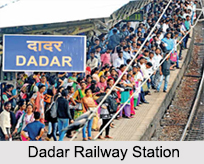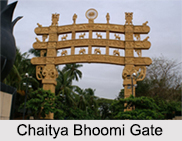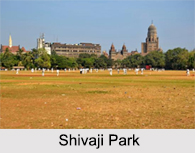 In the Indian state of Maharashtra, Dadar is a neighbourhood in Mumbai and is situated at the heart of the city. Dadar serves as the only railway station on both the Western Dadar and Central Dadar lines belonging to the Mumbai Suburban Railway network. Thus it forms the transit point for numerous passengers and remains highly crowded. For a long time Dadar has been a cultural centre for the Maharashtrians as well as the entire Indian Diaspora.
In the Indian state of Maharashtra, Dadar is a neighbourhood in Mumbai and is situated at the heart of the city. Dadar serves as the only railway station on both the Western Dadar and Central Dadar lines belonging to the Mumbai Suburban Railway network. Thus it forms the transit point for numerous passengers and remains highly crowded. For a long time Dadar has been a cultural centre for the Maharashtrians as well as the entire Indian Diaspora.
History of Dadar
History of Dadar can be traced back to the 16th century when it was called as lower Mahim and was an important centre during the Portuguese period. During this era a church was also built here which is popularly known as the Portuguese Church and with time became a prominent landmark of the city. In the following British era a number of other developments took place in Dadar which transformed it from a residential suburb to a diverse neighbourhood.
Geography of Dadar
Dadar has been divided into East and West with a railway line. Dadar East is commonly referred as Dadar Central or Dadar T.T. The latter name owes to the former Dadar Tram Terminus which was shut down after the closure of the tram network in Mumbai. Dadar West is often called as Dadar B.B. as it is located along the western line which previously served as a part of the Mumbai and Baroda and Central India (BB&CI) Railway. Dadar West market forms one of the very popular shopping destinations for the residents of central Mumbai, distant satellite towns and suburbs.
 Culture of Dadar
Culture of Dadar
In the heart of the Mumbai city, Dadar used to be a vegetable market which was once responsible for the distribution of vegetables all around Mumbai. Dadar is known to be the centre of getting all possible things and is always known to be a cultural centre for the East Indians and the Marathi speaking immigrants. Being situated along the Konkan Coast, the native language of the region is a dialect of Konkani.
The famed Shivaji Park is also housed in Dadar which is a huge playground and served as the training ground for some of the best cricketers of India including Sunil Gavaskar and Sachin Tendulkar. There is also a Shivaji Park Residential area which is a highly sought after region in central Mumbai owing to its proximity to the famous Siddhivinayak Temple in Prabhadevi, Mahatma Gandhi Olympic Swimming Pool, Shivaji Park and Dadar Chowpatty. It is here in Dadar that the first Vada Pao was invented outside the Dadar station by Ashok Vaidya around the year 1971.
 Dadar also houses one of the largest primary and secondary schools in Mumbai which is under the administration of the Indian Education Society (IES) and Balmohan Vidyamandir. Chaitya Bhoomi, the site where the last rites of Dr. Babasaheb Ambedkar were performed, also lies in Dadar. The place hosts a grand ceremony in his memory on 6th of December every year. The official residence of the Mayor of Mumbai, called the Mumbai Mayor`s Bungalow, and the well known Sena Bhavan which is the headquarters of the political party Shiv Sena also stand in Dadar. One of the oldest bridges in Mumbai, Lokmanya Tilak Bridge, is in Dadar which was constructed in 1923 and is constructed completely of granite and hard English-made metal. The bridge connects east and west Dadar.
Dadar also houses one of the largest primary and secondary schools in Mumbai which is under the administration of the Indian Education Society (IES) and Balmohan Vidyamandir. Chaitya Bhoomi, the site where the last rites of Dr. Babasaheb Ambedkar were performed, also lies in Dadar. The place hosts a grand ceremony in his memory on 6th of December every year. The official residence of the Mayor of Mumbai, called the Mumbai Mayor`s Bungalow, and the well known Sena Bhavan which is the headquarters of the political party Shiv Sena also stand in Dadar. One of the oldest bridges in Mumbai, Lokmanya Tilak Bridge, is in Dadar which was constructed in 1923 and is constructed completely of granite and hard English-made metal. The bridge connects east and west Dadar.
Visiting Information on Dadar
Being a prominent railway terminus on both the western and central lines makes Dadar a transit point for many passengers travelling through the Suburban Railway. While travelling via roadways, Dadar east has been also a key interchange point for those coming from Pune, Panvel and Navi Mumbai. And the Mumbai Airport is at a mere distance of about 10 km from Dadar and is well connected by roadways.



















